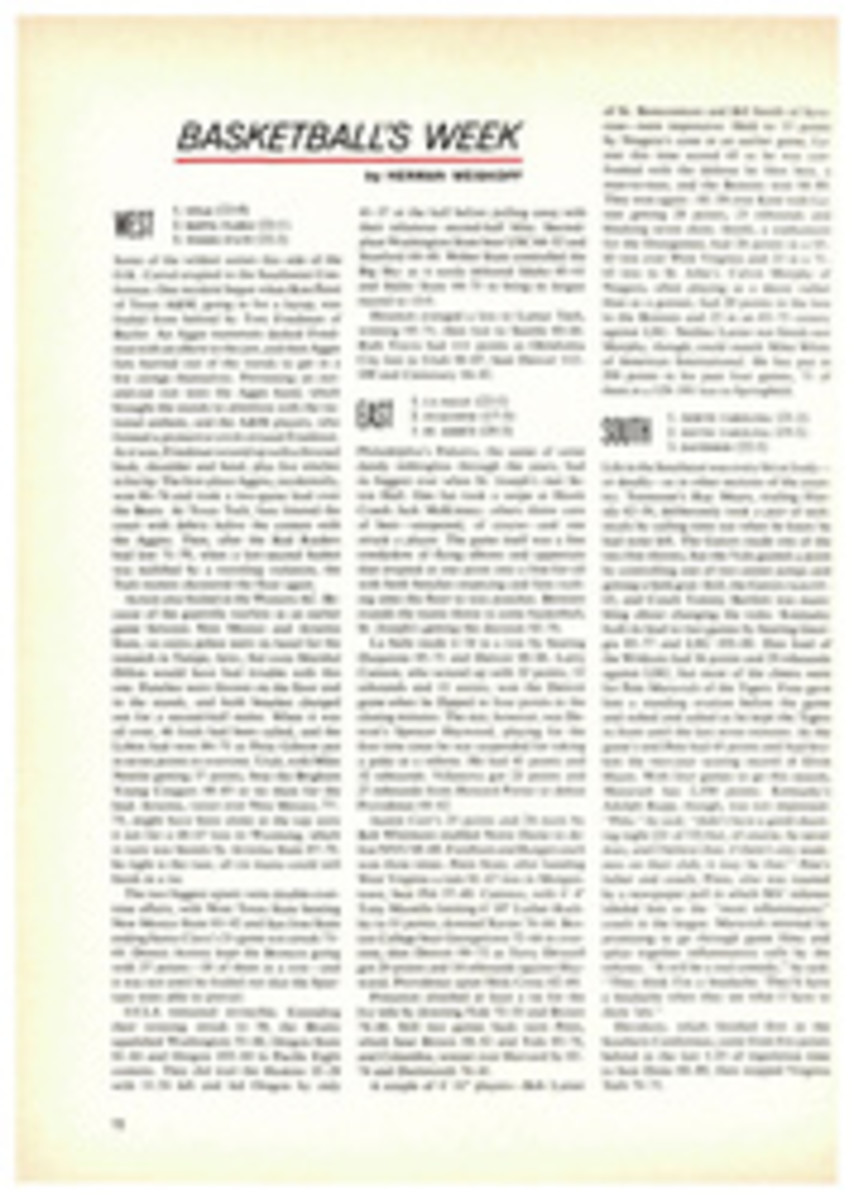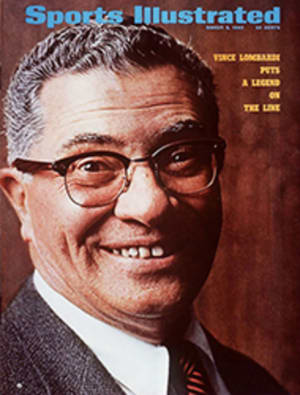
Some sweet theft at Daytona
If there is an auto race to make average, healthy motorists start thinking about shopping for a heart transplant, it is the Daytona 500. Run at speeds near 190 mph on the tricky, high-banked Daytona International track, this most important of all stock-car races hammers the ears and startles the eyes with violent motion. Last Sunday an exuberant crowd of 101,000 saw the richest 500 (worth $208,000) won on the very last lap by the space of a single car length. In the winning Ford was bushy-haired Lee Roy Yarbrough of Columbia, S.C., a man up from poor streets of Jacksonville and known around stock-car racing as No. 2. Last year he was the reluctant runner-up in three big events and won just one.
Sweeter than white lightning was his victory over a red-hot comer named Charlie Glotzbach, driving a Dodge Charger, for he had trailed Charlie for the previous 14 laps and just did nail him. It was on the next to last turn of that last lap that Lee Roy got ahead.
After a pair of 125-mile qualifying races on Thursday, the race shaped up precisely as the wheel-to-wheel rouser it turned out to be. Both of the challenging factory teams, Ford and Dodge, had half a dozen strong performers, and neither had a clear-cut advantage over the other. Ford, with a new snout-nosed racer, the Talladega, swept the top five positions in the first race, but Dodge countered with a 1-2-3 sweep of the second.
Ford, which had threatened to pull out of the race earlier in the month because its new 429-cu.-in. "staggered valve" engine was not approved, led with Cale Yarborough, who was coming off the most successful season in stock-car history: four superspeedway victories and a record $136,786 in prize money. Ford also had Grand National Champion David Pearson, hard-charging Donnie Allison, Indy imports A. J. Foyt and Bobby Unser and, get this, Richard Petty. Petty, of course, had been driving his Blue Angel Plymouth on the Southern circuits for a decade. In early January he switched to the Ford camp. The move was precipitated by two considerations. First, Petty wanted to drive the more competitive Dodge Charger on the big tracks. Chrysler Corporation, despite the protests of its dealers, said no. Second, Richard and his family have always appreciated the value of a dollar. Ronnie Householder, the Chrysler racing manager, was a little bitter about it. "Ford was like the serpent dangling the golden apple, and the Pettys took a bite," he said.
Dodge countered the Ford wave with Glotzbach, Paul Goldsmith, Bobby Allison, Bobby Isaac and two disparate young personalities, Pete Hamilton and Buddy Baker.
Hamilton is a fuzzy-cheeked New Englander from Dedham, Mass. and new to the big tracks. "Everybody told me how easy I made it look," he said after a warmup lap at 186 mph, "but my knuckles were white from gripping that steering wheel."
Buddy Baker is a 6'4" hot-tempered leadfoot who has been known to go blind at the sight of the green flag, and on Sunday he led for a few early laps and ultimately finished fifth. During practice for the race he demolished one car in a spectacular 190-mph crash in the No. 1 turn—and gained confidence from it. "I'd never been sure about the wall here before," he said, "but after that wreck I knew I could survive anything." Nice words, especially since Baker was the pole-sitter for the 500.
But on Saturday, during a 300-mile Sportsman race (for cars at least three model-years old), a young driver from New York, Don MacTavish, tested the wall and lost. Coming out of the fourth turn, the most dangerous part of the racecourse, MacTavish lost control, dived to the inside, overcorrected and slammed into the outside wall. His 1966 Comet was sheared in half; there was absolutely nothing left of the car in front of MacTavish. He spun wildly and came to rest, exposed, pointing back up the track. Behind him, Sam Sommers, in a 1961 Ford, smashed head-on into MacTavish, who, if he was not already dead from the impact with the wall, most assuredly was after Sommers hit him.
And so the next day, amid the high school bands, the Sunday television preachers and all the other Southern color attendant on stock-car racing, but under the pall cast by MacTavish's death, the 500 got rolling.
The race itself was amazingly free of serious accidents, although the caution flag was dropped five times. The only injury was a cut foot and bruised nose suffered by Cale Yarborough when he rode the wall around the fourth turn midway through the race.
The lead changed hands several times during the first three-quarters of the 500 but, thanks to a variety of mechanical ills, by the 170th lap of the 200-lap race the only challengers were Yarbrough and Glotzbach. Both made their last pit stops between the 181st and 186th laps. As they hooked up again, Glotzbach led Yarbrough by nearly eight seconds. Five laps later the margin was 3.1 seconds; with three laps left, one second. When they took the white flag for the last lap they were .3 of a second apart.
Because of the high speeds, it is impossible, at least improbable, that a car can get past another equally fast car between the fourth turn and the finish line, and so Lee Roy made his move at the entrance to the third turn.
"We were coming up on a slow car driven by J. D. McDuffie, which I knew hadn't raced here before," Lee Roy said, "and I hoped and prayed he had learned one thing here this afternoon—to look in his rearview mirror." Lee Roy moved beneath McDuffie, praying and hoping McDuffie wouldn't move down on him, because Glotzbach was forced to go high around McDuffie on the other side. Earlier in the race Glotzbach had pulled the same thing on Lee Roy, and Lee Roy had gently kissed the wall. But both cars held control this time, and although Glotzbach tried, he was unable to get past Yarbrough during the last 1,200 feet to the finish. No. 2 was finally No. 1, and he had a $38,950 winner's purse to prove it.

